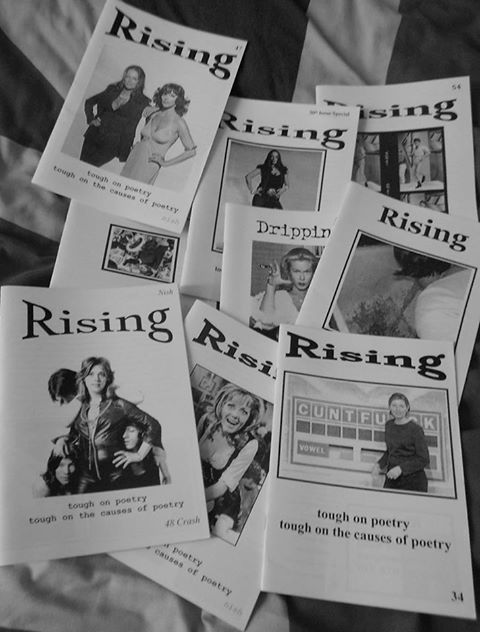‘Poems of Yves Bonnefoy 1’ (trans. by Ian Brinton & Michael Grant)
-Reviewed by Hayden Westfield-Bell–
Ian Brinton and Michael Grant team up to translate the poems of Yves Bonnefoy in the aptly named Poems of Yves Bonnefoy 1, a new chapbook published by Oystercatcher Press. The authors capture Bonnefoy’s delicate, stark environments and present them through a characteristically minimal style; mimicking Bonnefoy’s efficient yet powerfully effective use of vocabulary and accentuating the sensual nature of his poems. Though unsteady in places, Poems of Yves Bonnefoy 1 is a finely crafted collection of probing poetry.
In an article on Arcadia Review, Hoyt Rogers describes the difficult process of translating Bonnefoy’s poems, he begins with the word ‘boat’, which Bonnefoy describes as ‘“a fundamental metaphor” of his work’. Yet Bonnefoy rejects the French word bateau, the generic word for boat, opting instead for barque, which indicates a smaller or rowing boat. Hoyt examines barque; ‘it parallels bateau; the problem lies in the subtler realm of tone, of connotation’, but, unable to find an alternative in English he turns to Bonnefoy for clarification, who argues that barque is particularly evocative because “between the consonants the vowel forms the same dark hollow we see in a boat between the curved planks of the prow and stern”. Nevertheless, ‘lacking an identical twin for barque, [Hoyt has] to settle for boat’. The difficulty of translating Bonnefoy is thus made apparent; every word must be felt, sounded, considered, tasted and tested before an adequate replacement can even be considered, yet also (in Bonnefoy’s own words); ‘while language is a system, the speech of poetry is presence […] the ontological rightness of our [the translator’s] new-found images matters more much more than whether they match term by term, in skin-deep resemblance, those of the original’. The act of translating is ‘an onerous task’, one that I don’t envy…
Poems of Yves Bonnefoy 1 opens with ‘The Lizard in Place’; where a startled lizard ‘freezes / And feigns death’ whilst the observing narrator muses on its paralysis. The reptiles’ defensive inaction is ‘the first step of consciousness in stone […] A great fire infused’ that excites the observer; ‘I love its grip on silence […] its pause before the hour of victory’. The poem as a whole is a valuable introduction to Bonnefoy’s work: while deconstructing the lizard’s action the narrator uncovers a number of core concepts, that of the spirit, of the eternal, and of silence. The relationships between these concepts are then explored, enjoyed, and finally understood as a whole, emphasised by the closing line ‘holding its grip on the earth’. We find solidity, definition, we fully understand the lizard and its action. We will see similar movements in later poems, though their shifts occur rapidly and with greater complexity.
‘Siren Song’ marks the beginning of the more melancholic poems, ‘You are alone, enclosed by dark boats’ with ‘grey water’ and ‘fatal shores’. We find another ‘heart’ in the poem, and are introduced to a number of objects that make an appearance later. The long lines and large amount of commas add to the melancholic tone, softening the poem into a dark stillness which resurfaces in ‘Medusa’, ‘The Iron Bridge’ and ‘The Ordeal’. Though a powerful poem, ‘Siren Song’ is dwarfed by the intense lines ‘shrouds itself in the nights wound’ and ‘its sliced throat an absence that the blood devours’ of ‘Shore of another Death’ on the opposing page. Gripping again at the core items of ‘heart’, ‘oil’, ‘death’ and ‘sword’, ‘Shore of another Death’ grapples with a bird’s mortality through minimal surreal imagery. Each line bristles with connotations; ‘the boat, pulled back riding the movement of the tide’ and the suggestion of an ‘other shore of darkness’ summons visions of the Styx, whereas ‘to die in the severed light’ appears religious, suggesting sanctity. Though dense with visions and description, the poem reads well and can be enjoyed quickly, though the thick nature of the lines rewards the more persistent reader. Nevertheless, I found the lack of question marks at the end of some lines a little disorientating, we see this in ‘Siren Song’ (‘Are you walking upon this earth that moves’), and in ‘Shore of another Death’ (‘What was it more than a voice that desires not to lie’).
There are several odd moments in the chapbook where the syntax appears unsettled, such as the opening to ‘The Ordeal’ (‘I was the one who walks / With care for a last muddied water’) and from ‘Shore of another Death’, (‘As the boat, pulled back riding’). The poems continue as if the lines slotted in perfectly with the others, though they stand out awkwardly. These oddities are, however, few and are easily forgotten when reading the more intricately carved poems, ‘I often hear’, ‘You will make your bed’, ‘To the Voice of Kathleen Ferrier’ and the poems towards the rear of the book, such as ‘The Ravine’, ‘The Eternity of Fire’ et al. In these later poems – reading them with the knowledge of the items and concepts explored in the earlier poems – we become aware of the bold strokes of the authors, the sure-but-not-certain approach to his subject that gradually becomes apparent as they plays with his pieces from poem to poem. ‘The Iron Bridge’ is particularly skilful.
Poems of Yves Bonnefoy 1 is an accomplished collection of translations that touches on the delicate nature of existence through mystical, spiritual landscapes, probing the philosophy of language and pulling the reader into the desperate depths of Bonnefoy’s poetry.



